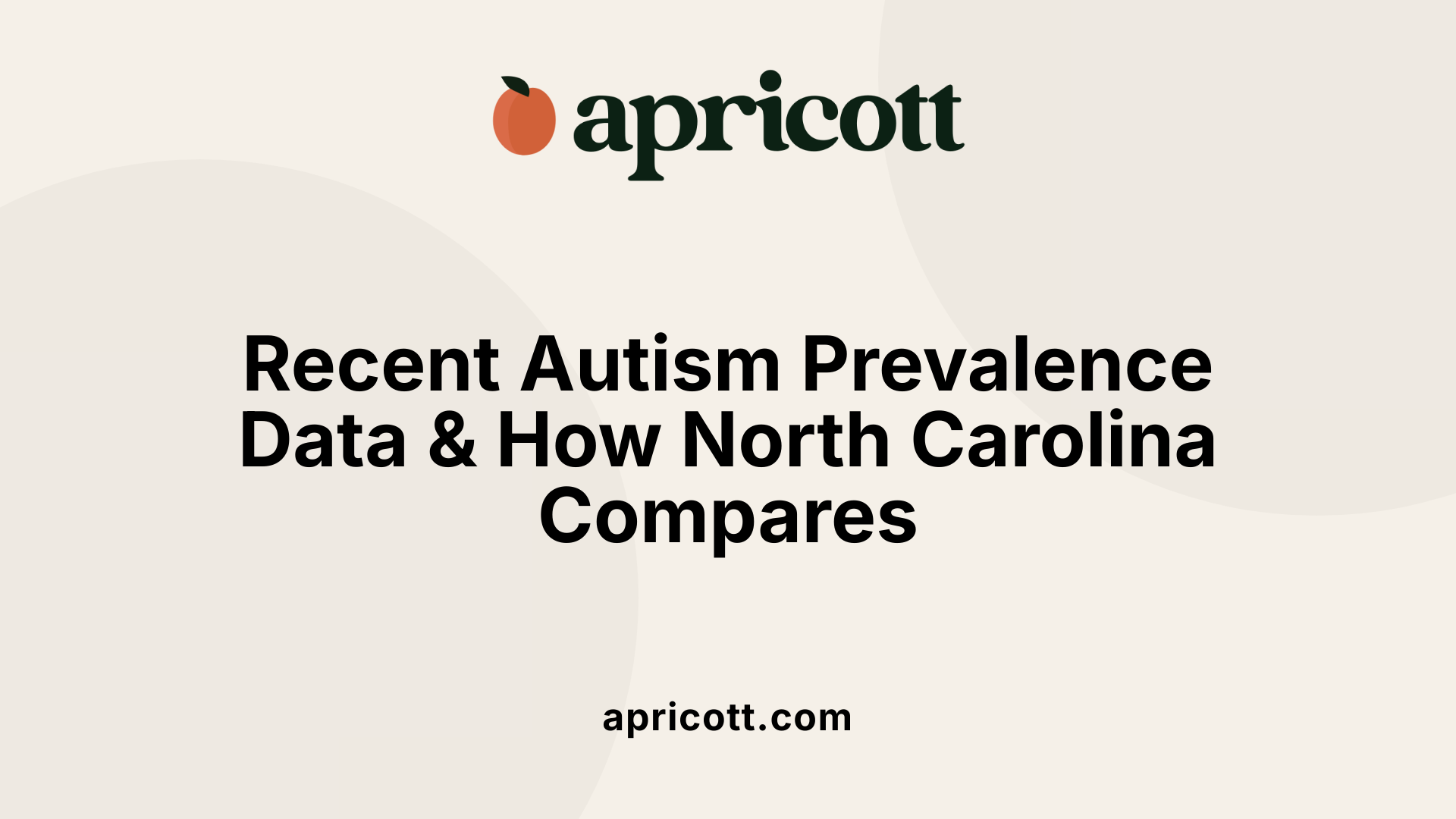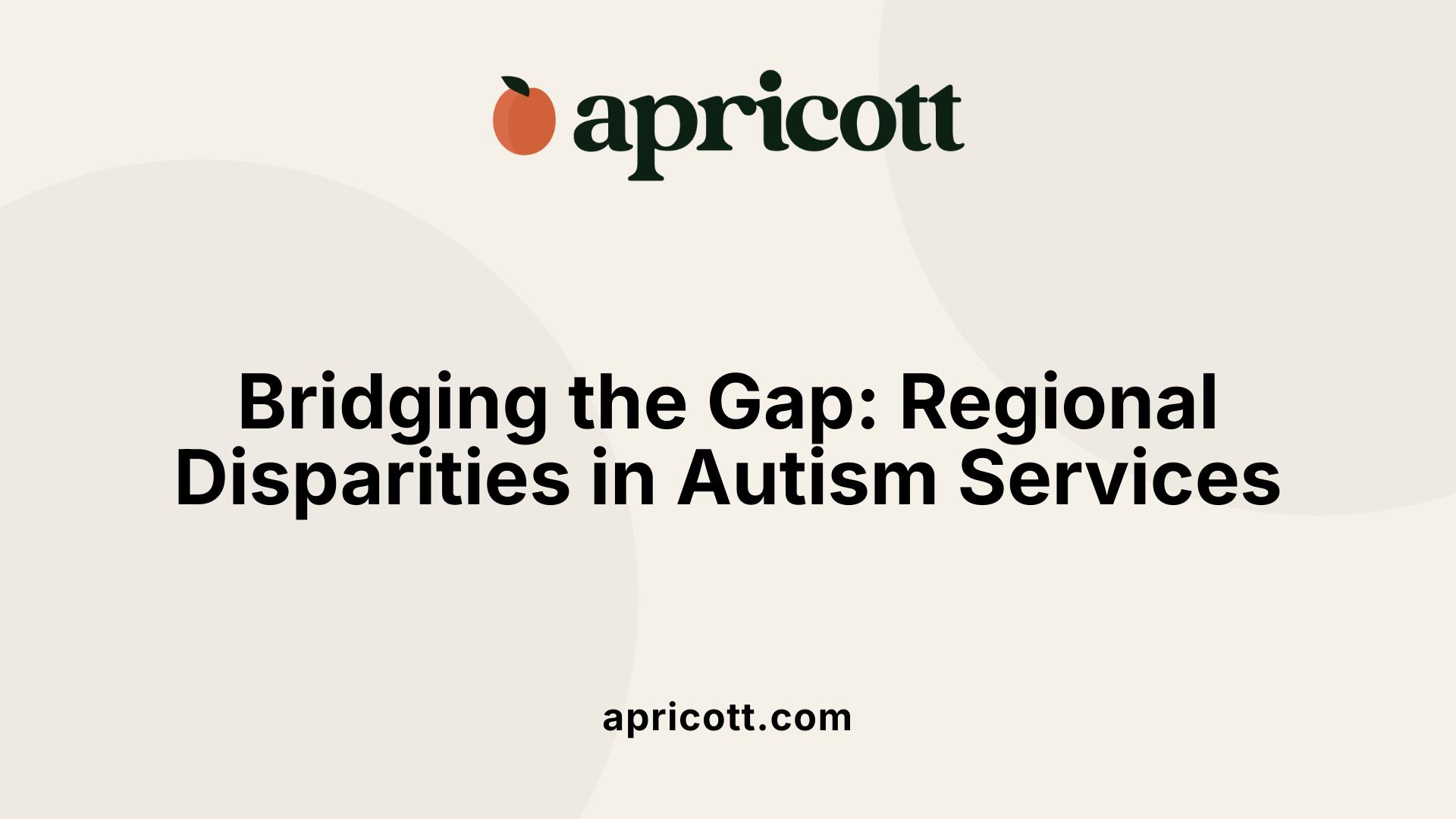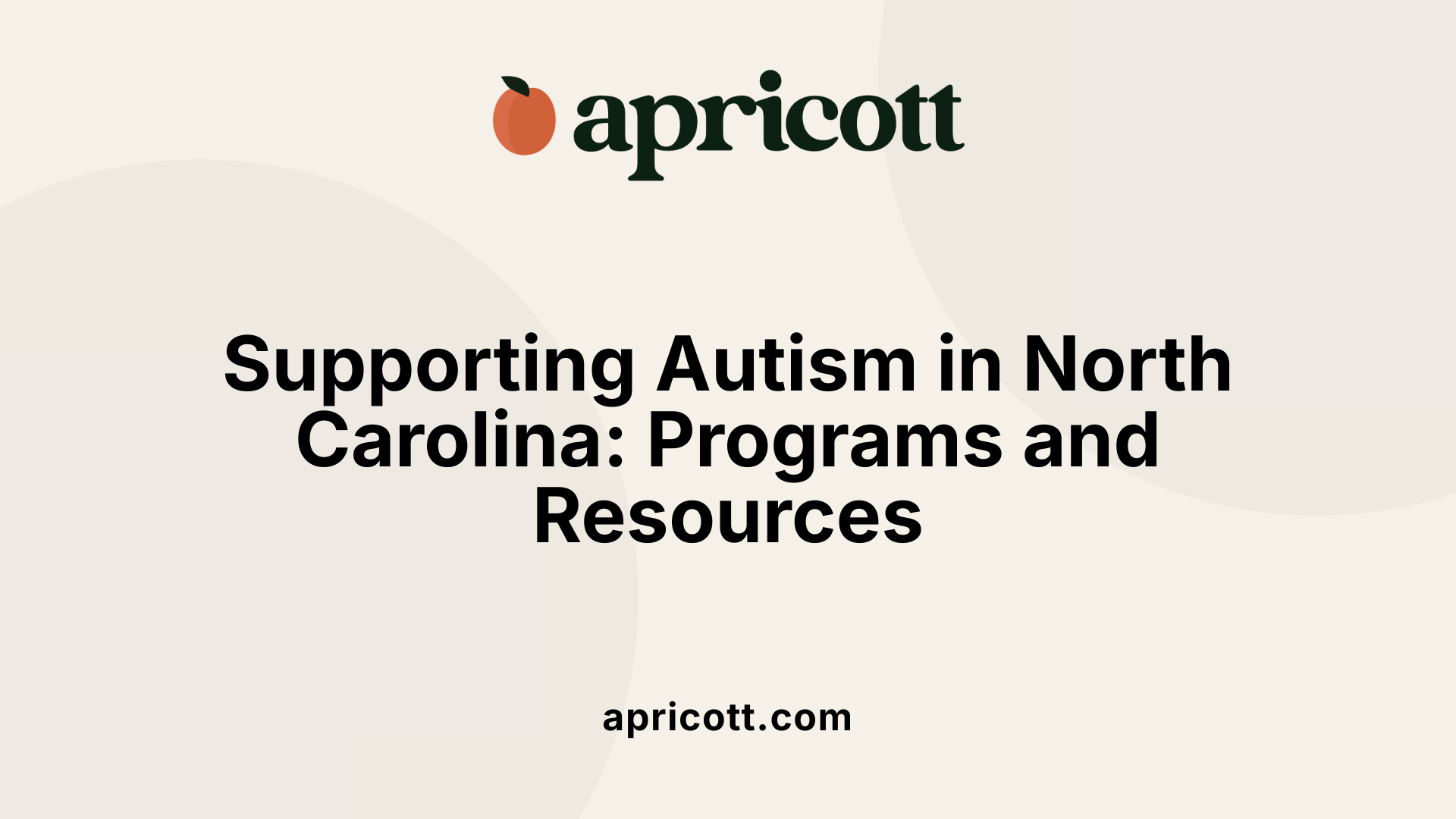Understanding Autism in North Carolina: Trends, Disparities, and Resources
Autism spectrum disorder (ASD) continues to garner increased attention across the United States, including North Carolina, where recent data reveal notable trends in prevalence, diagnosis, and access to support. This article explores these evolving patterns, regional disparities, contributing factors, and the vibrant programs designed to support individuals with autism in North Carolina, providing a comprehensive look at the current landscape of autism in the state.
Recent Autism Prevalence Data and National Contexts

What are the recent statistics and data on autism prevalence in North Carolina?
Recent data paint a clear picture of increasing autism spectrum disorder (ASD) diagnoses across North Carolina. As of April 2025, about 1 in 31 children aged 8 years are diagnosed with autism, translating to roughly 3.2% of children in this age group. This prevalence mirrors national numbers but highlights that North Carolina sits among states with higher rates of ASD. In 2014, the state’s prevalence was approximately 1 in 31 children, indicating a consistent upward trend.
The median age at diagnosis in North Carolina has improved, now averaging around 36 months, over a year earlier than the national median. This earlier detection rate demonstrates the success of state initiatives aimed at promoting early screening and diagnosis.
While North Carolina is not part of the CDC’s Autism and Developmental Disabilities Monitoring (ADDM) Network, similar patterns emerge from the CDC’s nationwide reports, where the prevalence among 8-year-olds has increased over recent years—from 1 in 36.8 two years prior to 1 in 31 now.
Overall, increased awareness, better screening tools, and a growing number of trained professionals have driven this rise. Efforts such as statewide early intervention programs and specialized training have contributed significantly to early detection, enabling access to therapies sooner.
Despite progress, disparities remain between urban and rural areas. Larger cities like Charlotte and Raleigh report higher diagnosis rates and earlier interventions—averaging around 38 months—thanks to more abundant resources.
In contrast, rural regions face hurdles like limited access to diagnostic centers, longer wait times—sometimes up to 10 years for Medicaid waivers—and transportation barriers. Initiatives such as mobile clinics, telehealth services, and workforce training are ongoing to bridge these gaps.
In summary, North Carolina’s ASD prevalence continues to rise and aligns with the nationwide trend. Focused efforts on early diagnosis and expanding services are helping to serve more children and families impacted by autism.
Historical Trends and the Evolution of Diagnosis

How have autism prevalence rates changed over time in North Carolina?
Autism prevalence rates in North Carolina have shown significant increases over the past two decades. In the early 2000s, data from the CDC’s Autism and Developmental Disabilities Monitoring (ADDM) Network reveal that the prevalence among 8-year-olds was about 1 in 300 to 1 in 100 children. By 2006, this rate had improved to approximately 1 in 110, and it continued to rise, reaching around 1 in 88 in 2008.
Between 2002 and 2008, North Carolina experienced a 78% increase in autism diagnoses, driven by several factors. Improved diagnosis tools, heightened public awareness, and increased screening efforts contributed to this upward trend. Researchers also observed that more professionals trained to recognize autism led to earlier and more accurate detection.
Historical data further highlight that as early as the 1990s, about 1 in 154 children born in 1994 met the criteria for ASD by age 8 in North Carolina. Over the years, surveillance data confirmed a steady increase in ASD cases, reflecting both genuine prevalence increases and enhanced identification practices.
Overall, the trajectory demonstrates a clear rise in autism prevalence in North Carolina, aligning with national trends but distinct due to state-specific efforts and data collection practices. These developments underscore the importance of ongoing research and resource allocation to meet the growing demand for autism services.
Factors Contributing to Rising Autism Rates

What factors contribute to autism rates in North Carolina?
Several elements influence the rising prevalence of autism spectrum disorder (ASD) in North Carolina. One of the main factors is increased awareness among parents, educators, and healthcare providers. As understanding of autism grows, more children are being diagnosed earlier, which boosts reported prevalence numbers.
Improved screening tools and expanded training for professionals contribute significantly as well. These advancements allow for earlier and more accurate detection, especially given North Carolina's focus on diagnosing children around 36 months—earlier than the national median.
Environmental influences and genetic factors also play roles. While specific environmental causes are still under study, both genetic predispositions and exposures may increase ASD risks.
Geographical differences impact diagnosis rates too. Urban centers often have better access to specialized services, like Applied Behavior Analysis (ABA) providers, which facilitate earlier diagnosis and treatment.
However, disparities persist. Rural areas face obstacles such as limited therapy centers, long waitlists, and transportation issues, which can delay diagnosis and intervention.
Sociocultural factors influence reporting as well. Minority populations, including Hispanic groups, have historically faced barriers to diagnosis due to language, cultural differences, and lack of access to healthcare.
North Carolina tackles these challenges through programs like TEACCH and initiatives to expand telehealth and mobile clinics, aiming for more equitable service distribution.
In sum, the rising autism rates in North Carolina result from a mix of biological, behavioral, and systemic factors. Increased awareness and improved healthcare practices have led to better detection, but ongoing disparities highlight the need for continued efforts to ensure all children receive appropriate support.
Regional Disparities in Access to Services and Diagnosis

Are there regional disparities in autism diagnosis and access to services within North Carolina?
Yes, significant differences exist across the state when it comes to autism diagnosis and support. Urban centers such as Charlotte, Raleigh, and Durham generally provide more extensive access to autism-related services, including specialized clinics, early intervention programs, and a higher density of professionals trained in autism spectrum disorder (ASD) care.
In contrast, rural areas face numerous challenges. Families living in less populated regions often encounter longer wait times—sometimes up to 10 years—for Medicaid waivers that fund essential therapies. Limited availability of local therapy centers and specialists further restricts access.
Transportation barriers and poor internet connectivity can hinder families from utilizing telehealth options or mobile diagnostic clinics. These obstacles delay diagnosis and early intervention, which are crucial for better outcomes.
Data from North Carolina reflect these disparities. While urban areas benefit from early diagnosis—median age around 38 months—rural children frequently experience delayed diagnosis due to fewer screening opportunities. Additionally, disparities based on sociodemographics and race influence access, with minority communities, especially Hispanic and Black populations, less likely to receive Medicaid waivers or timely diagnoses.
Socioeconomic factors such as maternal education and household income also play roles, affecting the likelihood of children being diagnosed early and receiving ongoing support.
Overall, geographic, economic, and racial factors combine to create uneven access to autism services in North Carolina, necessitating targeted efforts to bridge these gaps.
Programs, Resources, and Community Support Initiatives

What programs and resources are available in North Carolina to support individuals with autism?
North Carolina provides a comprehensive network of programs and services designed to support individuals with autism throughout their lives. The Autism Society of North Carolina (ASNC) plays a central role by offering community education, autism resource specialists in every county, and specialized programs such as ABA therapy clinics, summer camps at Camp Royall, and social programs like the Over 30 Club for autistic adults.
State agencies are also actively involved in supporting the autism community. The TEACCH® program, operated by the North Carolina Department of Health and Human Services, offers diagnostic evaluations, evidence-based educational services, and developmental support tailored to children and adults with autism. The North Carolina Division of Mental Health provides mental health services, while the Department of Public Instruction ensures the inclusion of autistic students in educational settings.
Additional resources include the UNC Autism Research Center, which conducts vital research and offers training opportunities, and the Family Support Network, which provides respite care and guidance for families. The Arc of North Carolina advocates for policies that promote inclusion and employment, while local events such as Surfing for Autism raise awareness and bring communities together.
Employment support is also a focus, with programs like North Carolina’s LiNC-IT (Linking North Carolina to Inclusive Technology) which offers internships for college students and employment opportunities for autistic adults. These initiatives aim to foster a more inclusive environment and improve quality of life across the state.
| Program/Organization | Focus Area | Additional Details |
|---|---|---|
| Autism Society of North Carolina | Community education, advocacy, support | Provides resource specialists, summer camps, adult social groups |
| TEACCH® | Diagnosis & Educational services | Offers early diagnosis, customized educational plans, adult services |
| UNC Autism Research Center | Research & training | Conducts research, provides training for professionals and families |
| Family Support Network | Family assistance | Respite care, support groups, guidance for families in need |
| The Arc of NC | Advocacy, employment | Promotes employment opportunities, community inclusion |
Overall, North Carolina’s dedicated programs and organizations create a supportive environment that enhances service access, promotes independence, and fosters inclusion for individuals with autism and their families.
A Focus on Progress and Persistent Challenges
While North Carolina has made significant strides in understanding and supporting autism through increased awareness, early diagnosis, and community programs, disparities in access—particularly between urban and rural areas—remain a challenge. Continued investment in services, expansion of telehealth, and targeted outreach are vital for ensuring equitable opportunities for all individuals with autism. As research and community initiatives progress, North Carolina is poised to build a more inclusive environment that recognizes the value and potential of every individual on the autism spectrum.
References
- Autism Statistics and Signs
- CDC Releases New Data on Autism Prevalence
- North Carolina Department of Commerce Honors Autism ...
- North Carolina sees highest estimates to-date in ...
- Autism Data Visualization Tool
- Urban vs Rural Autism Access in NC: 2025 Insights & Gaps
- Autism Society of North Carolina | Find Help
- Support Agencies
- NCCARES - Resources | NC Office of Human Resources
.svg)
.svg)








